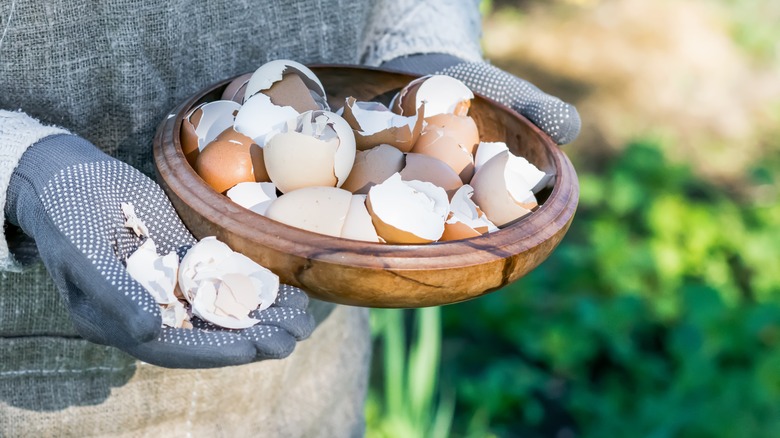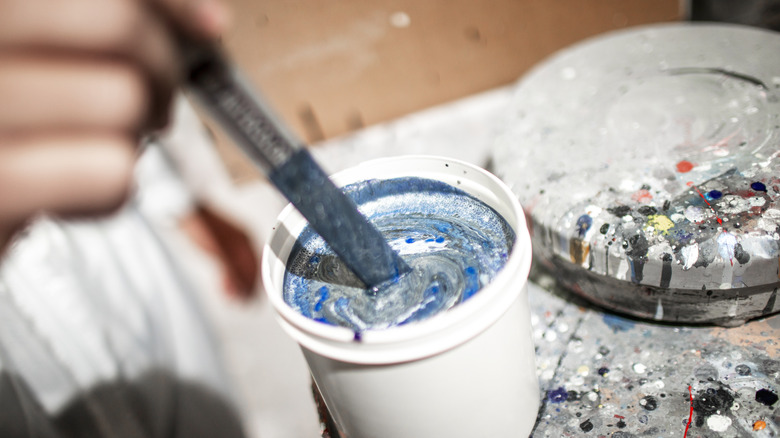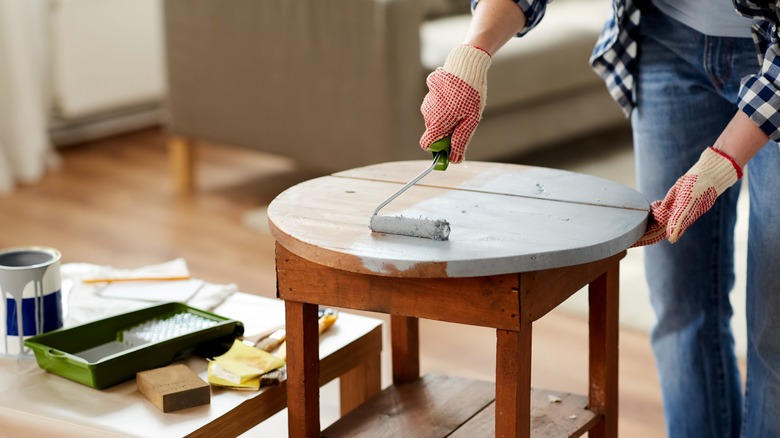What Happens When You Add Eggshells To Paint?
Visual artists can offer some great recommendations for altering paint finishes, as they spend a lot of time playing with paint and other additives when crafting their vision. If you're looking for a way to add a little bit of subtle texture to your large or small paint job, there are several common materials you can add to paint to change its texture, coverage, and hue. When mixed with paint, one of the most commonly available items — discarded eggshells — can create quite a bit of grittiness on any surface.
When you add ground eggshells to paint, the powder gives it a ruddy sand-like finish that reflects light and offers depth and a slight roughness. It's great for creating multi-dimensional finishes on painted objects or walls that are as interesting to touch as they are to look at. Eggs and their shells have a long history with paint, ranging from centuries-old egg tempura paints to subtle acrylic paints created from ground shells of different colors. Egg shells are a particularly eco-friendly alternative to other kinds of common texture additives from home and paint stores that can be much more expensive.
Making and using eggshell-textured paint
Begin by harvesting, washing, and drying your shells out. Use a mortar and pestle, spice grinder, or coffee grinder to create a powder from the shells. Grind them to your desired coarseness, keeping in mind that smaller surfaces are often perfect for more finely ground shells, while larger ones may require a course ground to really make a difference in texture. Once you're done, add the shells to your paint. Work slowly, stirring in small amounts until you get the desired consistency and thorough distribution.
When mixed, try this cool treatment on smaller decor items that need some additional texture, like candlesticks, lamp bases, and bowls or vases. When using neutral shades, the eggshells give the paint a more rustic and pebbly consistency that looks a lot like natural stone. This is a great approach for painting plastic, metal, or resin items to look like they're made from a much heftier stone. Even bright paint colors can benefit from a bit more texture to tone down an otherwise overly glossy finish.
You can also create a more dramatic speckled effect with larger bits of eggshell, which creates a charming, shabby chic, distressed paint effect. Adjust the volume of eggshells to the amount of paint you'll be using on the piece. This effect is also a great way to show off the subtle texture of small alcoves, hallways, or stairwells that get a lot of light.
Is it a good idea to add eggshells to paint?
While the eggshell texture has the most impact on small painted surfaces that catch and reflect the light, wall surfaces like accent walls need much more eggshell per volume to create visible texture. Other texturing agents like sand or Rol-A-Tex may be a better choice if you're painting a large area and want more visible signs of relief. Eggshells may also be a poor choice for surfaces that see a lot of touching and dirt since the shells, depending on size, can catch dust and debris more than a smooth surface.
For best results, use a roller or bristled paintbrush (foam brushes can sometimes catch and snag on the shells, resulting in an uneven finish). Artists often use this treatment for a variety of paint types, including watercolor and acrylic. For more noticeable texture on objects, lay down the broken eggshells under a medium like Mod Podge or Elmer's glue, then paint over them, which can give more dramatic results than mixing.


